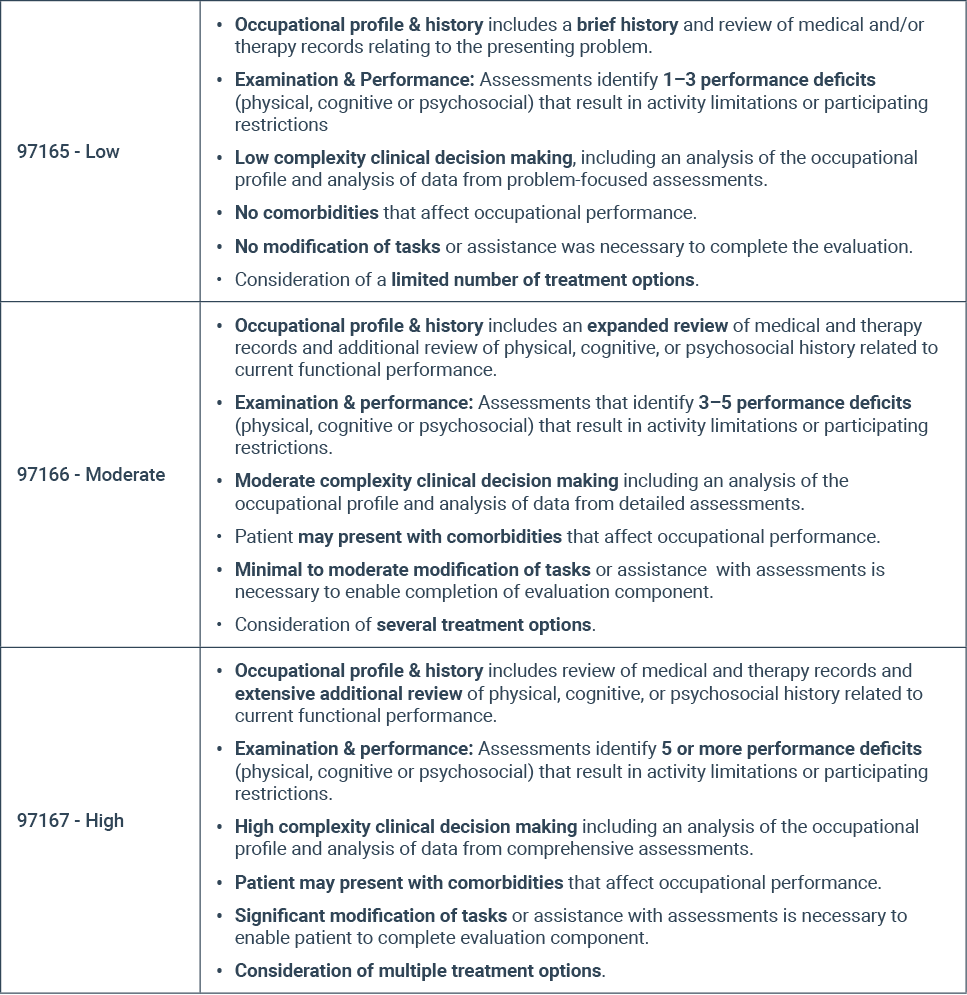Say Goodbye to 97003: New CPT Evaluation Codes for Occupational Therapy

Know the basics and want to jump right in? Start our free course on the New CPT Evaluation Codes for Occupational Therapy 2017 today.
Occupational Therapy has three new evaluation codes for the new year: 97165, 97166 and 97167. The new codes do not change the evaluative process. They serve to support the therapist in accurately identifying the complexity level of the evaluation and the degree of clinical decision-making required based on the patient’s condition. These codes stratify patients into low, moderate and high complexity (97165, 97166 and – respectively).
All of the new codes took effect January 1st and the old evaluation code has been removed from the code book. Therefore, it’s important to use the new codes to avoid any payment delays or denials.
How Will You Demonstrate Complexity?
Complexity will be determined by an occupational profile and history, the results of an examination, and by the level of clinical decision-making needed. Several other questions need to be asked to correctly determine the complexity level of the evaluation:
- How many deficits do your assessments identify?
- Does the patient have comorbidities that affect performance?
- Did you have to provide assistance to finish the evaluation tasks?
- How many treatment options are you considering?
The answers to the questions above will help you to determine which complexity level your evaluation meets. The threshold for each level is listed below.
It’s important to remember that all of the factors listed above are required for each level. If even one of the conditions isn’t met, then the evaluation will default to a lower complexity level. You could have a patient with many comorbidities and for whom you need to significantly modify the evaluative tasks, but if they only present with 1-3 performance deficits, that evaluation would still default to low complexity (97165).



